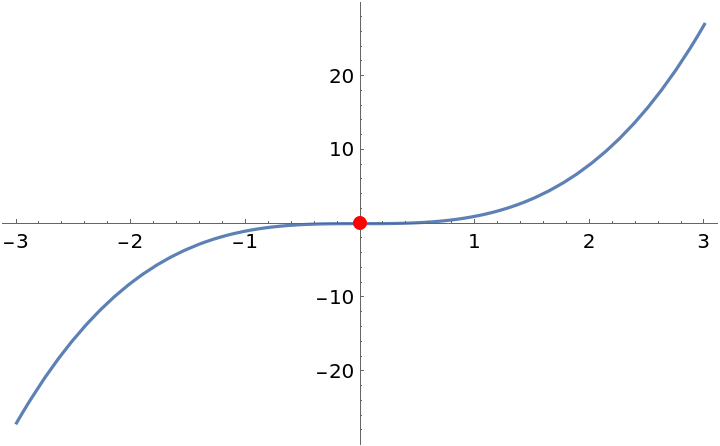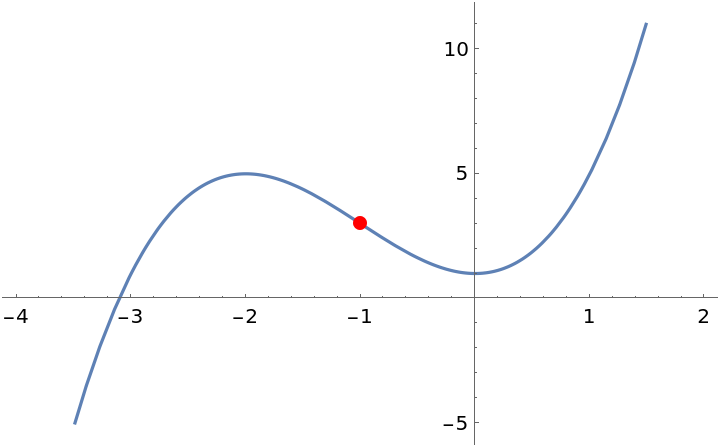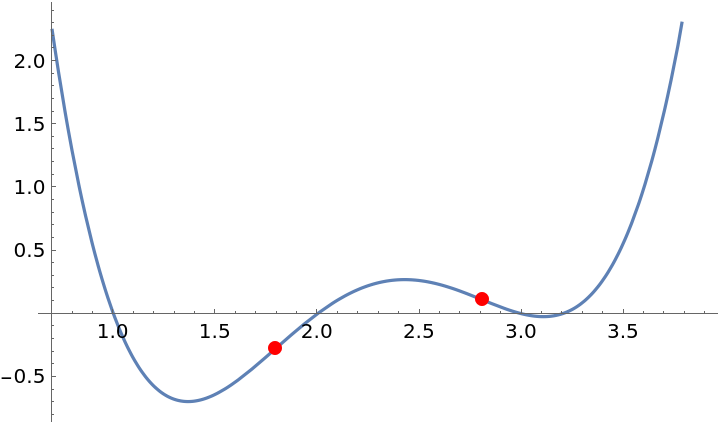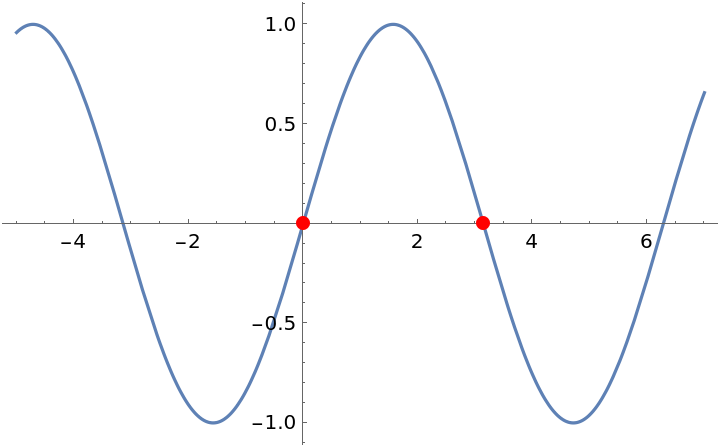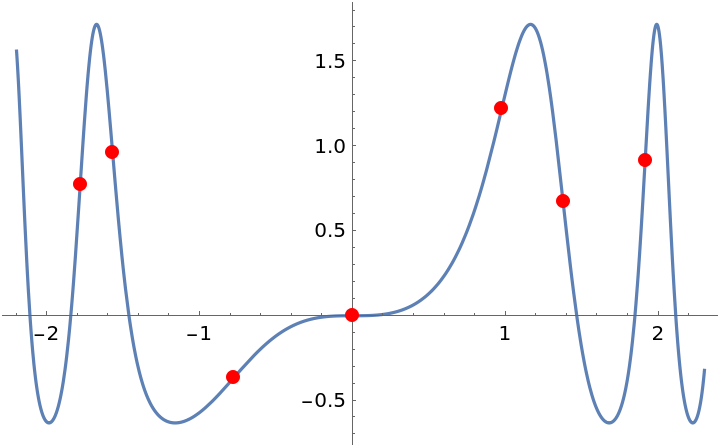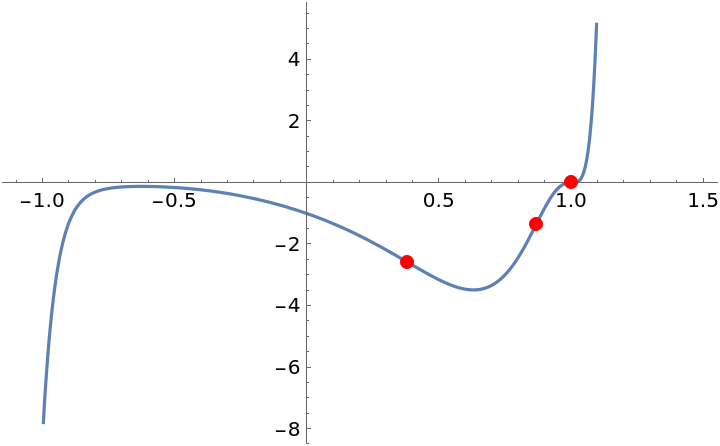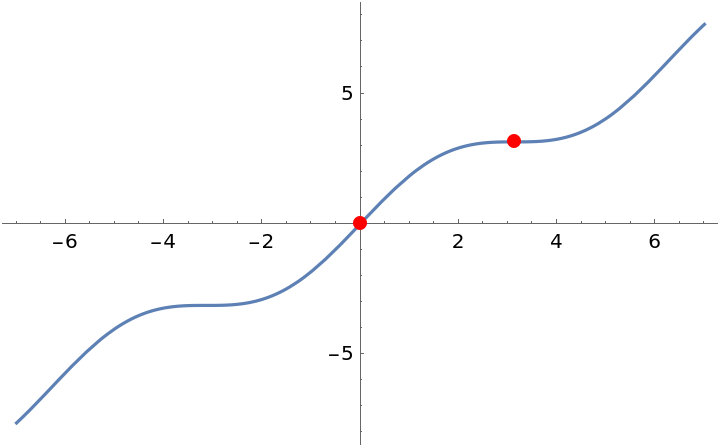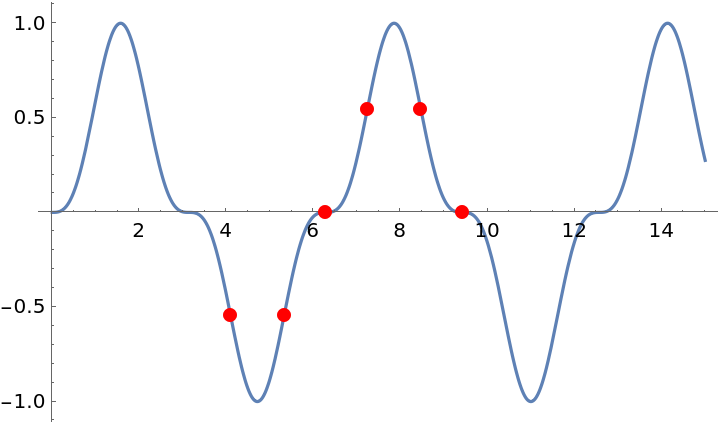Basic Examples (4)
Find the inflection points of a cubic function:
Plot the function and its inflection points found above:
Repeat the calculation, classifying inflection points:
Find and classify the inflection points of a polynomial function:
Plot the function and its inflection points:
Find and classify the inflection points of another polynomial function:
Plot the function and its inflection points:
Find and classify the inflection points of a trigonometric function:
Plot the function and a single cycle's worth of its inflection points:
Options (2)
Find and classify the inflection points of a function, specifying the range of the independent variable to include:
Plot the function and its inflection points:
Properties and Relations (3)
InflectionPoints will sometimes return results in terms of Root objects:
Applying N to these outputs converts to an ordinary numeric result:
Plot the function and its inflection points:
For functions with a repeating pattern of inflection points, InflectionPoints returns results in terms of one or more undetermined constants, which can take any integer value:
Plot the function and a single period's worth of its inflection points:
Find the inflection points of another periodic function:
Plot the function and a single cycle's worth of its inflection points:
